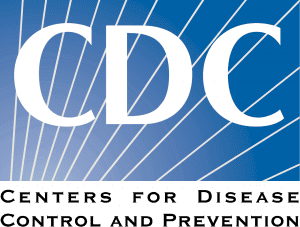- The Risk of SARS-CoV-2 Transmission in Community Indoor Settings: A Systematic Review and Meta-analysis
The authors conducted a systematic review to estimate the secondary attack rates (SARs) of SARS-CoV-2 and the factors modifying transmission risk in community indoor settings. Although vaccines are the most effective prevention measures for severe illness, they do not substantially reduce SARS-CoV-2 transmission in crowded settings. The authors included 34 studies with data on 577 index cases, 898 secondary cases, and 9173 contacts. The setting-specific SARs were highest for singing events (SAR, 44.9%; 95% CI, 14.5%–79.7%); indoor meetings and entertainment venues (SAR, 31.9%; 95% CI, 10.4%–65.3%); and fitness centers (SAR, 28.9%; 95% CI, 9.9%–60.1%). They found no difference in SARs by index case, viral, and setting-specific characteristics.
- Relative Effectiveness of the NVX-CoV2373 Vaccine Compared With the BNT162b2 Vaccine in Adolescents
This was a retrospective matched cohort study that evaluated the efficacy of two doses of NVX-CoV2373 compared with that of BNT162b2 vaccines in preventing severe acute respiratory syndrome coronavirus 2 infection in adolescents. They analyzed 13-week risk differences and ratios between these two vaccines. The study included 465 NVX-CoV2373 and 465 BNT162b2 recipients. Throughout the follow-up period, 4.1% of NVX-CoV2373 recipients and 2.8% of BNT162b2 recipients contracted the severe acute respiratory syndrome coronavirus 2 infection. Basically overlapping confidence intervals and the findings suggest noninferiority between the two vaccines.
- Viral and Symptom Rebound Following Anti-SARS-CoV-2 Monoclonal Antibody Therapy in a Randomized Placebo-controlled Trial
The authors explored viral and symptom rebound after COVID-19 amubarvimab/romlusevimab monoclonal antibody therapy vs placebo in the randomized ACTIV-2/A5401 trial. Participants underwent nasal SARS-CoV-2 PCR at study days three, seven, 14, and 28. Viral rebound was defined as RNA ≥3 and ≥0.5 log10 copies/mL increase from day three or seven, and symptom rebound as hospitalization or any moderate/severe symptom for ≥2 days after initial symptom improvement. There was no difference in viral rebound (∼5%/arm) (analysis population n=713) or symptom rebound among participants who initially improved (hazard ratio 0.95 (95% CI 0.52, 1.75, analysis population) n=574); <1% had both viral/symptom rebound.
- The Importance of Including Long COVID Outcomes When Developing Novel Treatments for Acute COVID-19
Amid efforts to develop effective treatments for acute COVID-19, there is growing recognition of the need to address Long COVID as a key outcome measure. Authors argue there are seven compelling reasons to include Long COVID measurements in clinical trials investigating acute COVID-19 treatments: (1) Long COVID is not rare. (2) Long COVID is debilitating to individuals and has a high societal cost. (3) Those at high risk of severe COVID-19 are also at higher risk of developing Long COVID if they are infected with COVID-19. (4) Treatments for acute COVID-19 may reduce the risk of Long COVID. (5) Measures exist to track Long COVID. (6) Long COVID considerations are potentially important for acute COVID-19 treatment decision making. (7) Deaths and hospitalizations due to COVID-19 are increasingly rare. While not every trial needs to include assessments of Long COVID, it is worth the research burden to include assessments where possible, as this could facilitate the uptake of acute COVID-19 treatments that lessen the societal burden of Long COVID. - The Persistence of Myalgic Encephalomyelitis/Chronic Fatigue Syndrome (ME/CFS) after SARS-CoV-2 Infection: A Systematic Review and Meta-analysis
These are the results of a systematic review and meta-analysis to determine the proportion of Long Covid (LC) patients that satisfy ME/CFS diagnostic criteria. They identified 13 eligible studies that reported a total of 1,973 LC patients. This meta-analysis indicated that 51% (95% CI, 42%-60%) of LC patients satisfied ME/CFS diagnostic criteria with fatigue, sleep disruption, and muscle/joint pain being the most common symptoms. Importantly, LC patients also experienced the ME/CFS hallmark symptom, post-exertional malaise.
Situation Dashboards

World Health Organization (WHO)
Novel Coronavirus (COVID-19) Situation from World Health Organization (WHO)

Johns Hopkins University (JHU)
Coronavirus COVID-19 Global Cases by the Center for Systems Science and Engineering (CSSE) at JHU

COVID-19 in US and Canada
1Point3Acres Real-Time Coronavirus (COVID-19) Updates in US and Canada with Credible Sources

Genomic Epidemiology COVID-19
Genomic Epidemiology of (COVID-19) Maintained by the Nextstrain team, enabled by data from GISAID.






